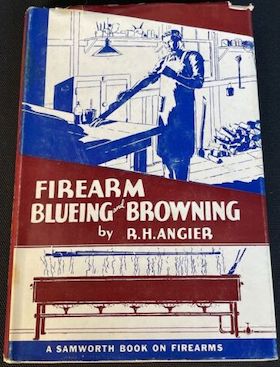
-----
Browning versus blueing of firearms
Can you explain the difference between "bluing" and "browning" of firearms? I understand that many older muzzleloading firearms were browned, whereas newer firearms are blued. I know that real "bluing" cannot be done at home, but how about "browning"?
Alex DeCariafirearms hobbyist - Lancaster, Pennsylvania, U.S.A.
2003
I have several buddys that are into antique firearms and they regularly "Blue" & "Brown" at their home shops. The blueing process for home use is not a "factory" blue and may not be as durable but, none-the-less, it has a very nice appearance. Factory blue is a hot process and blueing at home is normally done through a "cold" process. Browning was the precursor to blueing--used primarily on antique weapons to prevent corrosion (same as blueing) and the process is very doable at home via commercial products or home made recipes. A lot of my friends have their own recipes for browning which include soaking walnut hulls in solvents and many other various methods--all from old recipes created by our ancestors.
Hope this helps,
- Shinnston, West Virginia, USA
2003
Brown for iron and steel:
15 gm iron chloride
1 lit water or alcohol
Good luck,
- Cerovski vrh Croatia
2003
Q, A, or Comment on THIS thread -or- Start a NEW Thread
